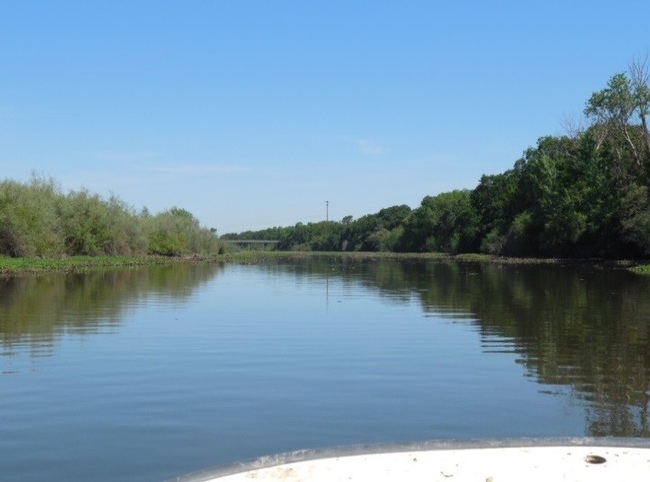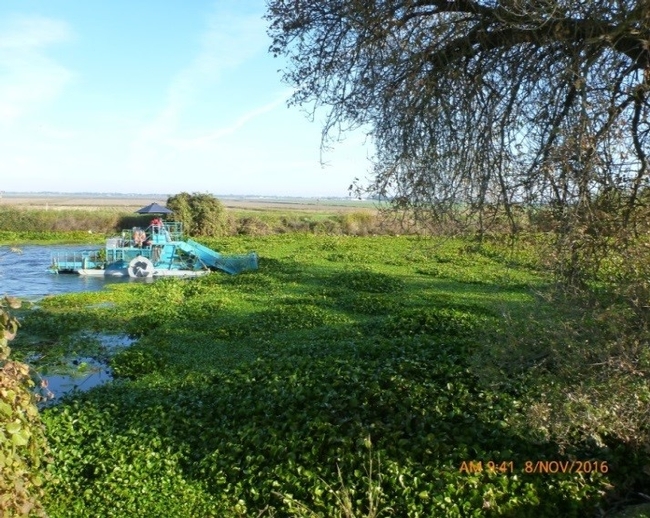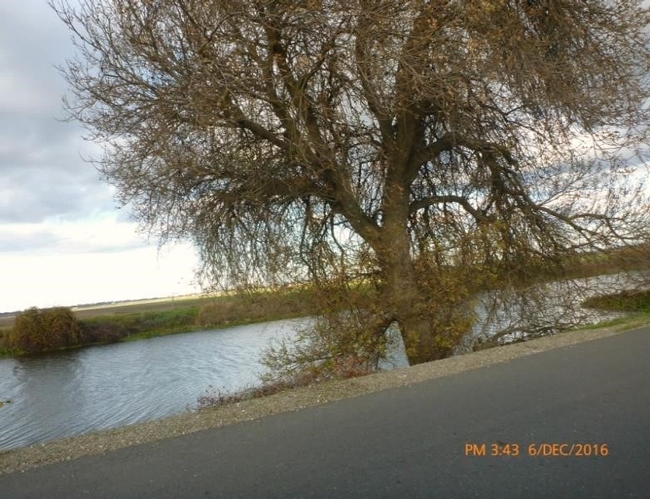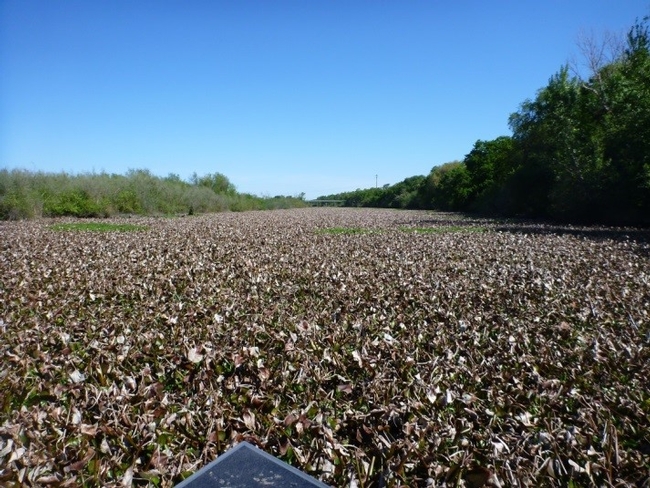Controlling invasive aquatic plants such as waterhyacinth, South American spongeplant, and waterprimrose in the Sacramento-San Joaquin Delta is no easy task. To address these species of floating aquatic vegetation (FAV), the California Department of Parks and Recreation, Division of Boating and Waterways (DBW) implements an integrated pest management program using a combination of chemical and mechanical control methods.
Historically, herbicide treatment was the primary tool used by DBW to control FAV. Starting in 2013, mechanical harvesting of FAV was integrated into DBW's control program. By 2016, DBW was able to conduct mechanical harvesting almost continuously throughout the year in various locations of the Delta.
Mechanical harvesting is conducted using vessels designed specifically for aquatic weed removal from waterways. The mechanical harvesters collect waterhyacinth, spongeplant, and/or waterprimrose using cutters and conveyors to pull FAV from the water and onto the bed of the equipment. Collected plant material is offloaded to an excavator on shore, then trucked to a designated spoils area. After a waterway has been restored to open water conditions, herbicide treatments are typically used as a follow-up measure to maintain control of FAV growth.
Before work begins, environmental scientists survey the target area for species of concern, including the giant garter snake, delta smelt, valley elderberry longhorn beetle, and western pond turtle. In addition to the environmental surveys, an environmental scientist who has been trained as a biological monitor must be on site to assure that no species of concern are being or will be affected by the water hyacinth removal operation. Also, DBW provides environmental awareness training to the crew to make sure they learn about the various species at stake, take the proper mitigation measures, and/or notify the environmental scientist if uncertain about a particular species. This is a requirement by the California Department of Fish and Wildlife Streambed Alteration Agreement to ensure that no species of concern are impacted during mechanical harvesting operations. Our activities prioritize the protection of the environment and require strict mitigation measures.
Mechanical harvesting of FAV in 2016 occurred in several locations of the Delta, including Snodgrass Slough, Sycamore Slough, Sevenmile Slough, Whiskey Slough, Stockton Deep Water Channel and Waterfront, and the Westside Irrigation District canal which feeds into Old River. Between January and November of 2016, approximately 81,552 cubic yards of FAV were removed.

DBW operates its integrated pest control program in collaboration with the Delta Regional Areawide Aquatic Weed Project (DRAAWP), and is currently evaluating FAV-infested waterways for herbicide treatment and/or mechanical removal in the upcoming year.


